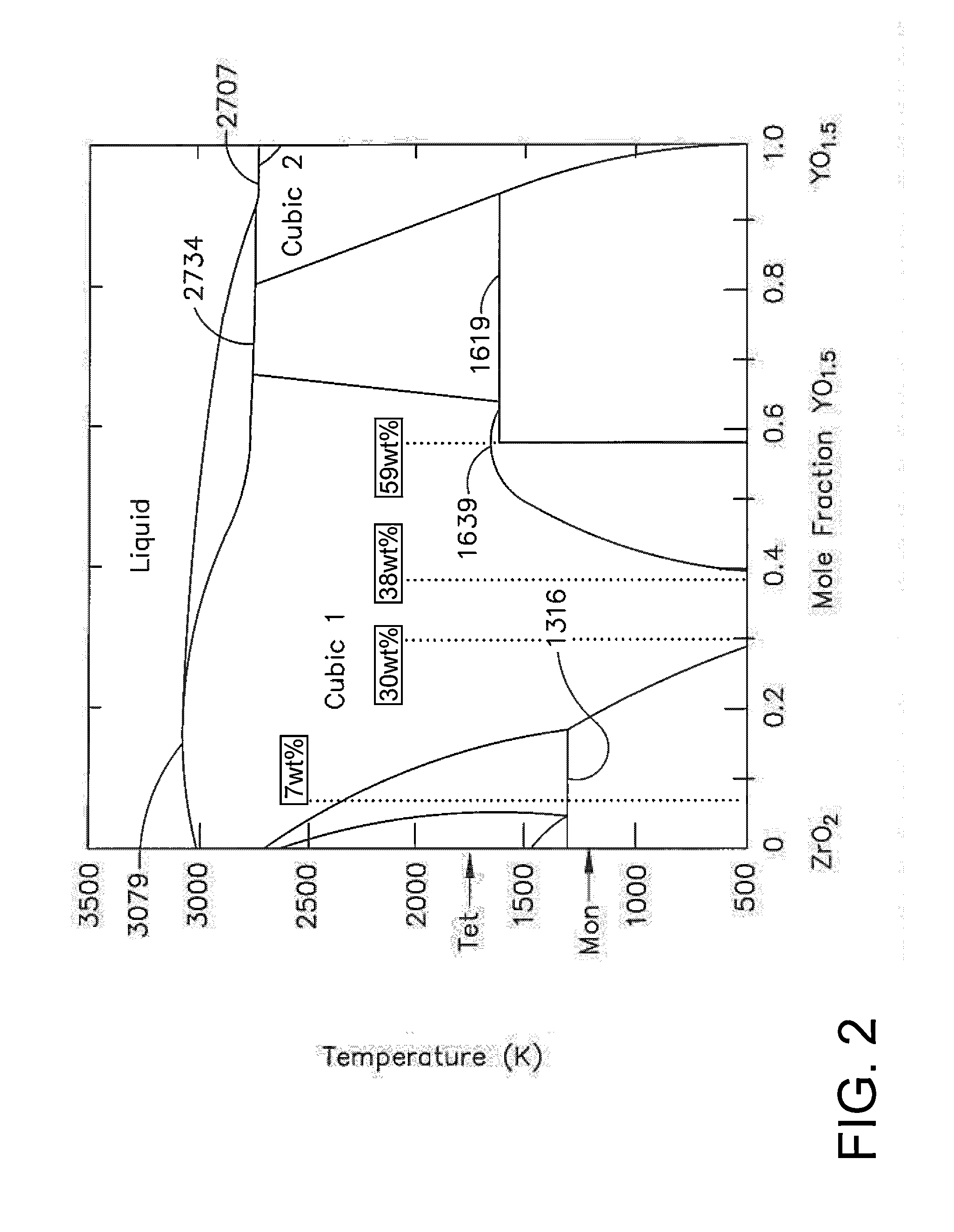Thermal barrier coating systems and processes therefor
a technology of thermal barrier coating and coating system, which is applied in the direction of superimposed coating process, ceramic layered products, transportation and packaging, etc., can solve the problems of reducing the thermal conductivity of the thermal barrier coating system. , to achieve the effect of reducing the porousness and significantly enhancing the thermal barrier coating system
- Summary
- Abstract
- Description
- Claims
- Application Information
AI Technical Summary
Benefits of technology
Problems solved by technology
Method used
Image
Examples
Embodiment Construction
[0019]The present invention is generally applicable to components subjected to high temperatures, and particularly to components such as the high and low pressure turbine vanes (nozzles) and blades (buckets), shrouds, combustor liners and augmentor hardware of gas turbine engines. The invention provides TBC systems that are suitable for protecting the surfaces of gas turbine engine components that are subjected to hot combustion gases. While the advantages of this invention will be described with reference to gas turbine engine components, the teachings of the invention are generally applicable to any component on which a TBC may be used to protect the component from a high temperature environment.
[0020]An embodiment of a TBC system 10 of this invention is schematically represented in FIG. 1 as being applied to the surface of a substrate 22, which in combination with the TBC system 10 yields a coated component 20. The TBC system 10 is shown as including a bond coat 12 that overlies ...
PUM
| Property | Measurement | Unit |
|---|---|---|
| thickness | aaaaa | aaaaa |
| thickness | aaaaa | aaaaa |
| thickness | aaaaa | aaaaa |
Abstract
Description
Claims
Application Information
 Login to View More
Login to View More - R&D
- Intellectual Property
- Life Sciences
- Materials
- Tech Scout
- Unparalleled Data Quality
- Higher Quality Content
- 60% Fewer Hallucinations
Browse by: Latest US Patents, China's latest patents, Technical Efficacy Thesaurus, Application Domain, Technology Topic, Popular Technical Reports.
© 2025 PatSnap. All rights reserved.Legal|Privacy policy|Modern Slavery Act Transparency Statement|Sitemap|About US| Contact US: help@patsnap.com



